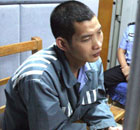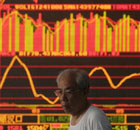Asia-Pacific
New Zealand earthquakes to be examined
(Xinhua)
Updated: 2010-02-22 16:16
 |
Large Medium Small |
WELLINGTON: New Zealand's earthquake risk is to be evaluated in a combined study with Japanese scientists.
The two-year project, coordinated by New Zealand's Institute of Geological and Nuclear Science (GNS Science) and Victoria University, will examine the boundary between the Pacific and Australian tectonic plates under Wellington to get a clearer idea of its threat, the New Zealand Press Association reported on Monday.
The plates are locked beneath Wellington and, based on the behavior of similar locked plates in other parts of the world, scientists expect this plate boundary will eventually rupture and produce a large, damaging megathrust earthquake, GNS Science said.
| ||||
However, project coordinator Stuart Henrys, of GNS Science, said evidence for large subduction earthquakes had so far been incomplete, making it difficult to properly understand the geological workings.
"Together with our Japanese collaborators, we anticipate this research will lead to a better understanding of what controls seismic behavior on the plate interface beneath the lower North Island."
Henrys said the study would generate a huge amount of data that would take several years to fully analyze.
The first stage of the project began in November when 50 portable seismometers, on loan from the United States, were placed around the Wellington region.
They will remain in place until next month to record the earthquake activity in the lower North Island.
In the final phase of the project in early 2011, 900 portable seismometers from Japan and the United States will be placed along the same line between Kapiti and Wairarapa to record seismic waves from borehole blasts set off by scientists.
Scientists would combine all the seismic recordings to build a three-dimensional image of the subduction zone under the lower North Island, which would then be compared to a similar 3D image of the subduction zone beneath Tokyo, which has a similar geological setting to Wellington.
The project would be one of the biggest seismic deployments in New Zealand's history, and would be the first to study the plate subduction zone under Wellington region in such detail.









